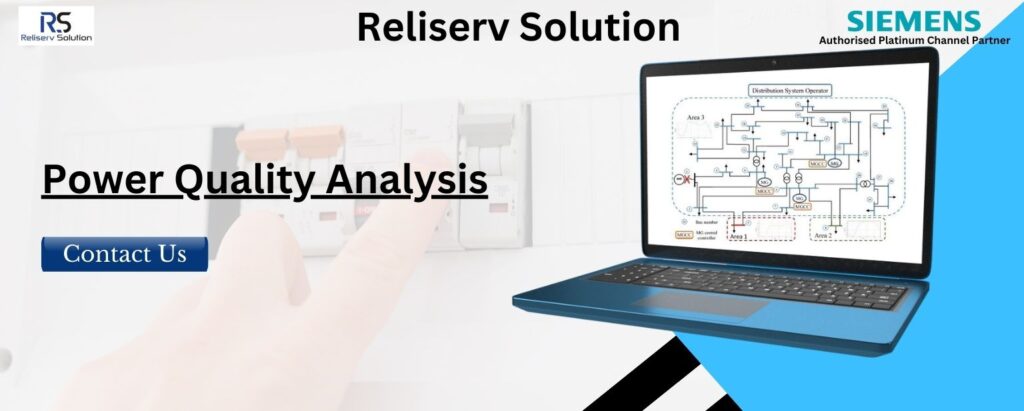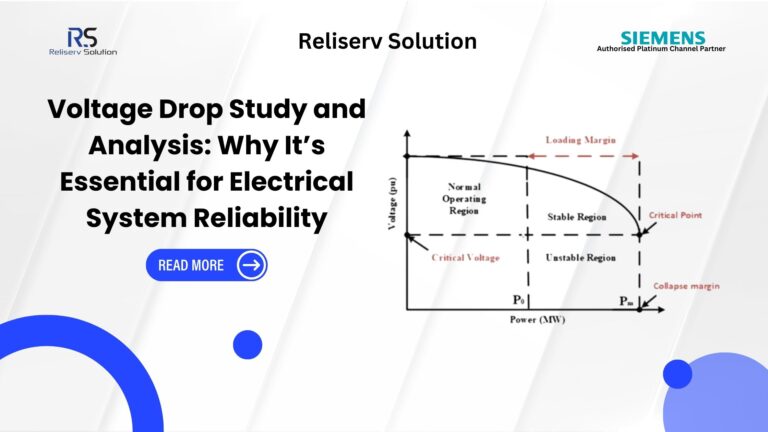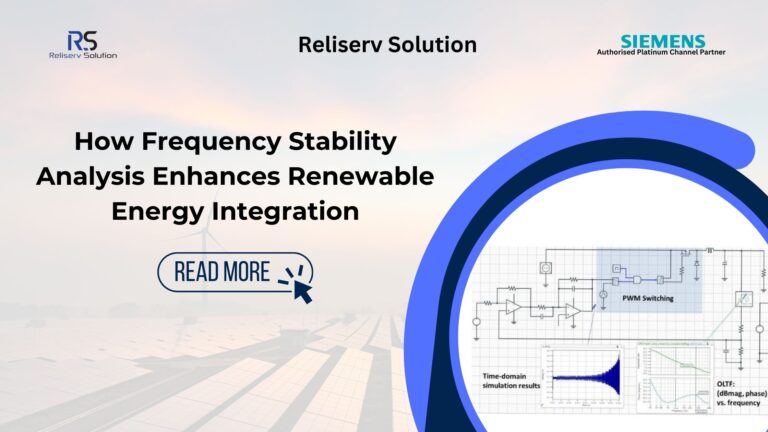The best performance and reliability of the technology in today’s networked world are dependent upon the quality of electrical power delivered to commercial, and industrial establishments. Low power quality can cause a number of problems, including harmonics, voltage sags, and changes in voltage. These problems can cause equipment failures, lost productivity, and monetary losses. Organizations must put into practice efficient solutions for power quality analysis and improvement in order to meet these issues for Power System Studies in Mumbai. This blog examines essential tactics for enhancing your systems’ capabilities using all-encompassing power quality control.
Introduction to Power Quality Analysis and Improvement
Power quality refers to the degree to which the voltage, current, and frequency of electricity meet the requirements of electrical equipment. Poor power quality can manifest in various forms, including voltage fluctuations, harmonic distortion, and voltage unbalance, among others. To ensure reliable operation and longevity of electrical systems, it is essential to conduct thorough power quality analysis and implement measures to improve power quality where necessary.
We offer power quality management services, power quality analysis, and research to ensure energy efficiency. The building should be inspected whenever an electrical system isn’t working properly to find the cause, look into the matter, and implement fixes. The objective of the electrical distribution system is to maintain the loads’ correct operation. The quality of the electric circuit is crucial for the load to function incorrectly. Power Quality Study and Analysis is the process of calculating and analyzing electrical system components for use in troubleshooting or obtaining marginal data.
Why is a Power Quality Study and Analysis done?
One of the most important issues in industrial facilities is power quality, which is also a significant untapped area for cost savings and financial gain in today’s enterprises. Power Quality management service may be harmed by incorrectly grounded equipment, imbalanced loads, damaged wiring, or inadequately shielded equipment. All of these issues increase the likelihood of electrical noise entering the system. Power Quality Study and Analysis monitoring has become a common practice for facilities due to the increasing need for guidance, monitoring, and operation in current Power System Studies in Mumbai. To address power quality challenges, we have developed a power quality management service.
Importance of Power Quality Study and Analysis
- Equipment Reliability: Poor power quality management service can cause premature failure of electrical equipment, leading to increased maintenance costs and downtime for Power System Studies in Mumbai.
- Operational Efficiency: Optimal power quality management service ensures smooth operation of equipment, maximizing productivity and efficiency in industrial and commercial facilities.
- Compliance: Adhering to Power Quality Study and Analysis standards and regulations is essential for compliance with industry guidelines and ensuring the safety of personnel and equipment.
- Cost Savings: By identifying and rectifying power quality issues, organizations can avoid costly equipment failures, downtime, and energy wastage, resulting in significant cost savings.
Signs of poor power quality are:
- Motor Failure and Unavailability.
- Downtime, Memory Loss, and Controls/Displays.
- Issues with the power factor and elevated utility penalties.
- Failed Transformers and Unavailable Time.
Numerous variables contribute to the causes of each of these issues. One of the causes is shared infrastructure. A setback at one customer’s facility may have a transient impact on consumers on the same subsystem; the more serious the fault, the more individuals it affects. Other bugs, such as harmonics, may arise in a customer’s system, travel around the network, and impact more customers. Verified tools combined with good design practices can tackle harmonic flaws for Power System Studies in Mumbai.
Always set up the analyzer according to the manufacturer’s instructions to avoid the following faults:
- Disregard for the current polarity.
- Not compatible with voltage/current probes.
- Running a long monitoring session only on battery power.

Strategies for Effective Power Quality Analysis and Improvement
- Power Quality Monitoring: Implementing continuous power quality monitoring using advanced metering and monitoring devices allows organizations to identify and analyze Power Quality Study and Analysis issues in real time. This proactive approach enables early detection of anomalies, facilitating timely intervention and corrective action.
- Harmonic Analysis and Filtering: Harmonics, which are undesirable frequency components present in electrical systems, can lead to overheating, equipment malfunctions, and electromagnetic interference. Conducting harmonic analysis and deploying harmonic filters helps mitigate harmonic distortion, ensuring a cleaner and more stable power supply.
- Voltage Regulation: Voltage fluctuations and sags can adversely affect sensitive equipment, causing malfunctions and downtime. Voltage regulation techniques such as voltage stabilizers and automatic voltage regulators (AVRs) help maintain stable voltage levels within acceptable limits, ensuring consistent performance of electrical systems.
Aim of Power Quality Analysis:
- The examination of discrepancies between system performance and load.
- The evaluation of the electric environment at a specific location within the facility with the goal of developing a power quality reference or better modeling techniques.
- The anticipated future performance of load-bearing or power-quality-degrading equipment.
- Increase the system’s efficiency and power factor.
- Prevent malfunctions and interruptions in production.
- Refrain from using too much energy.
- Take out transients, surges, and harmonics from the electrical network.
- Steer clear of PLC hang-up and voltage/frequency variations.
- Steer clear of Overheating transformers, blown capacitors, trip, etc.
- Energy bill savings as a result of lower losses and KVA requirements.
- Reduced interruptions lead to improved production quality.
- Improved Electrical Network and Component Life Cycle.
- Optimize the capacity of plant distribution.
Steps in Power Quality Study and Analysis:
- The purpose of the survey is mentioned and will be used throughout.
- Continue by drawing an accurate one-line diagram of the site’s electrical system.
- The analyzer is carefully attached at a certain point in the main breaker’s distribution system end to control incident energy levels within a reasonable range. (Measuring close to the service typically indicates extremely high fault current).
- After referring to the one-line graphic, keep “drilling down” into the distribution system.
- Acquire information directly from each system that is derivable.
- For swiftly gathering nameplate data and subsequently pinpointing precise connection positions, digital cameras are a good choice. Print off digital photos, and keep track of all the survey data. These will come in handy for data analysis and subsequent investigation.
- Doubting harmonics Should any of the following transpire:
- Neutrals become overheated.
- Transformer or motor overheating.
- Circuit breakers tripping unintentionally.
- Fuse burst.
- Unusually loud noise coming from a larger distribution apparatus.
- If sine waves with altered voltage are detected.
- The key elements in determining the severity and appropriate remediation methods for any harmonic issue are the amplitude of the different harmonic frequencies and the total harmonic distortion produced by the harmonics.
- When unusual insulation failures happen, the equipment records data for extended periods. Nearby lightning strikes are generally the cause of the most severe transients. They might also arise from changing loads.
Conclusion
In conclusion, effective power quality analysis and improvement are indispensable for ensuring the reliability, safety, and efficiency of electrical systems. By adopting proactive strategies such as continuous monitoring, harmonic analysis, voltage regulation, power factor correction, and grounding, organizations can identify and address power quality issues effectively.
Empowering your systems with comprehensive power quality management not only mitigates the risk of equipment failures and downtime but also optimizes energy efficiency and reduces operational costs.
Investing in power quality analysis and improvement measures is therefore essential for organizations seeking to enhance the performance and resilience of their electrical systems in today’s dynamic operating environment.
Use efficient Power Quality Analysis and enhancement techniques to strengthen your systems! Boost dependability and performance. Raise the bar for power quality. Located in Mumbai, Maharashtra, Reliserv Solution is the top exporter and supplier of Power System Studies. We also offer a wide range of specialized services and solutions to panel builders and other industries. Please do not hesitate to contact us by phone at +917506112097 or by email at [email protected] if you need assistance or have any questions. To see our selection of Power System Studies click here, which includes the well-known Power Quality Analysis.



